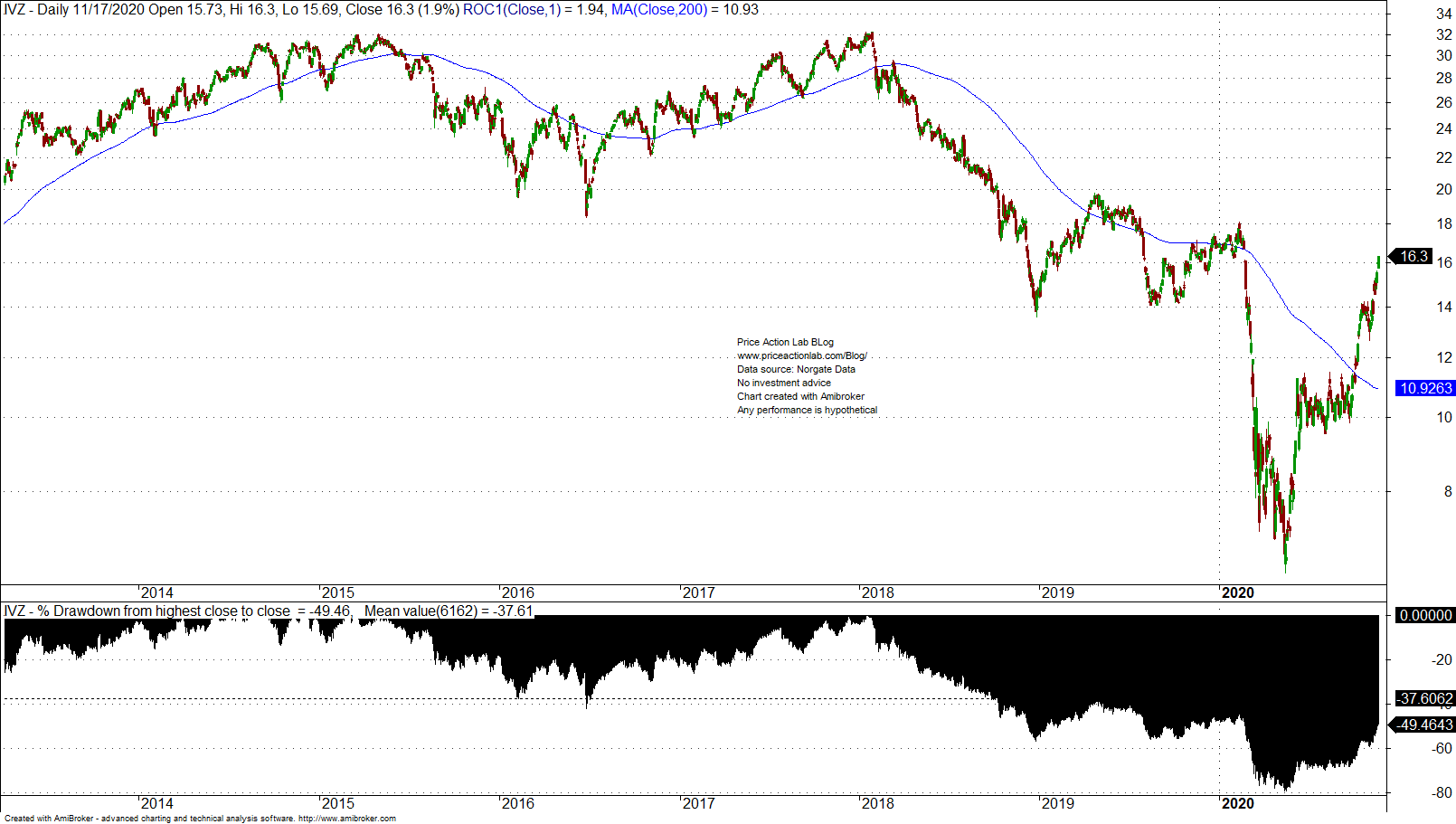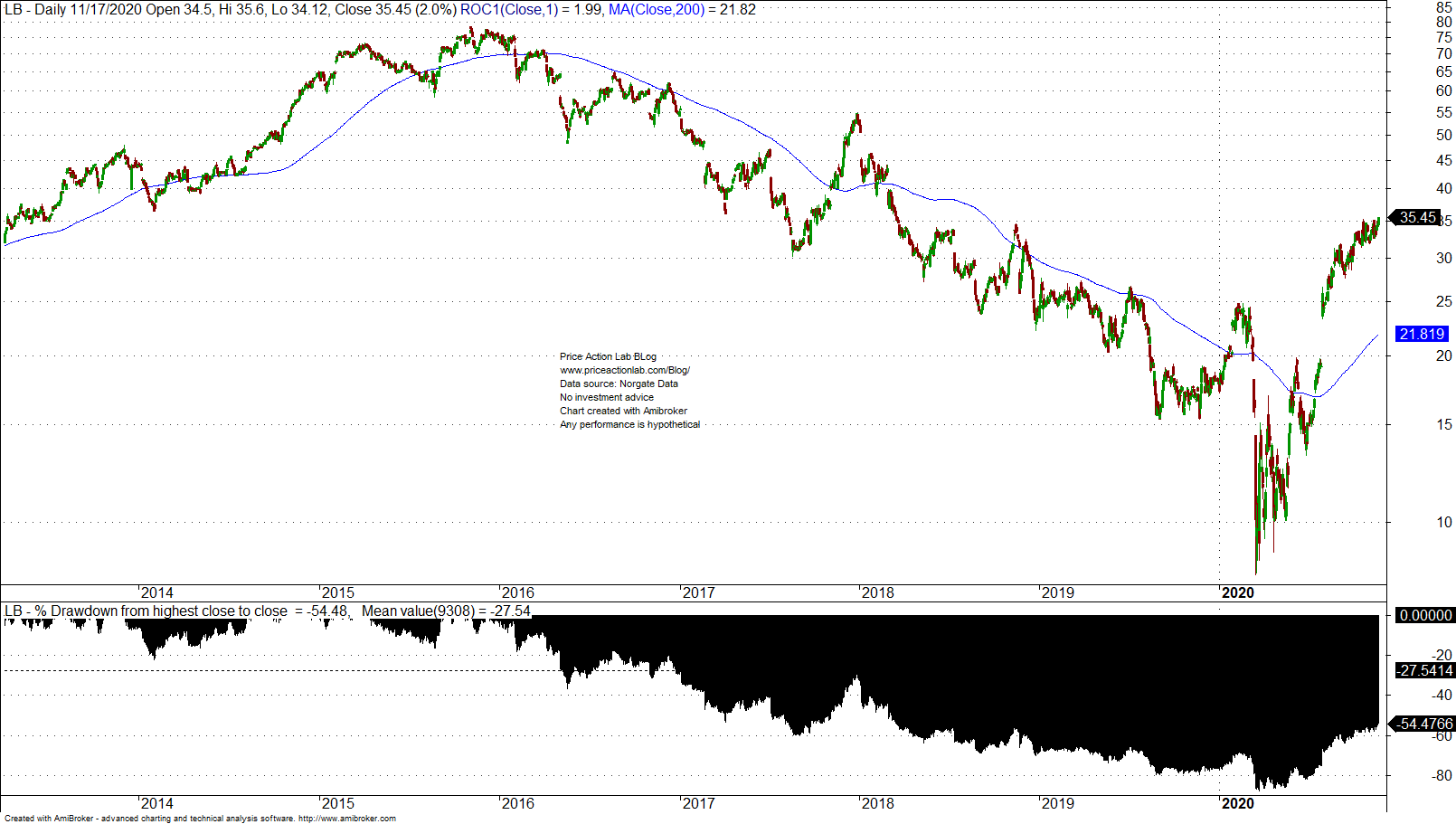Market breadth charts are frequently included in financial social media posts and blogs in support of the bull or (more often) bear case but these charts are not useful indicators of market direction due to important information that is compressed and lost.
Technical analysis indicators are elements of a lossy compression method that attempts to forecast (or follow) market direction. Important information about market dynamics is lost when compressed in the form of breadth indicators. For this reason, these indicators are mostly useless in market analysis.
However, technical analysts seem to be infatuated with breadth indicators while ignoring or not being aware of the perils of information compression. Let us give a specific example below.
In the last few days, there are many references to the fact that a very high percentage of S&P 500 stocks are above their 200-day moving average. In fact, as of the close of yesterday, Tuesday, November 17, 2020, about 89% of the stocks in S&P 500 were above their 200-day moving average. There were numerous posts in social media about this fact. This fact is not useful in price action analysis and here is why:
1 Although about 89% of the S&P 500 stocks are above their 200-day moving average, this is occurring after a significant crash earlier in the year.
2. Although 451 stocks are above their 200-day moving average, 213 of these stocks are 10% or more below their all-time high and 130 are 20% or more below their all-time highs.
3. Of those 453 stocks that are above their 200-day moving average, only 19 are at new, all-time highs.
4. In addition, there are 173 stocks in S&P 500 that are 20% or more below their all time highs.
Here is an example of a stock that is above its 200-day moving average:
IVZ is above the 200-day moving average but nearly 50% below all-time highs after dropping as much as 80% from the highs of 2018. The 200-day moving average was on a free fall and it is normal for price to cross above it after a rebound.
A similar case with LB is shown below:
A steep downtrend in 200-day moving average for several years creates favorable conditions for a cross of price above it but the stock is still more than 50% below all-time highs.
When using breadth indicators and due to lossy compression by virtue of construction, context is of paramount important. It is one thing to have 89% of stocks in S&P 500 above their 200-day moving average during a strong uptrend lasting several years and with many stocks at all-time highs and a different thing when the same percentage of stocks is above their 200-day moving average after a rebound because they were beaten up during a severe market decline. Context matter because it adds back some of the information lost during compression in constructing breadth indicators.
Therefore, any attempts to use breadth indicators for timing of overbought conditions and especially market tops, must carefully consider context. Otherwise the analysis is naïve and those who rely on it are amateurs.
Charting and backtesting program: Amibroker
Data provider: Norgate Data
If you found this article interesting, you may follow this blog via push notifications, RSS or Email, or in Twitter









